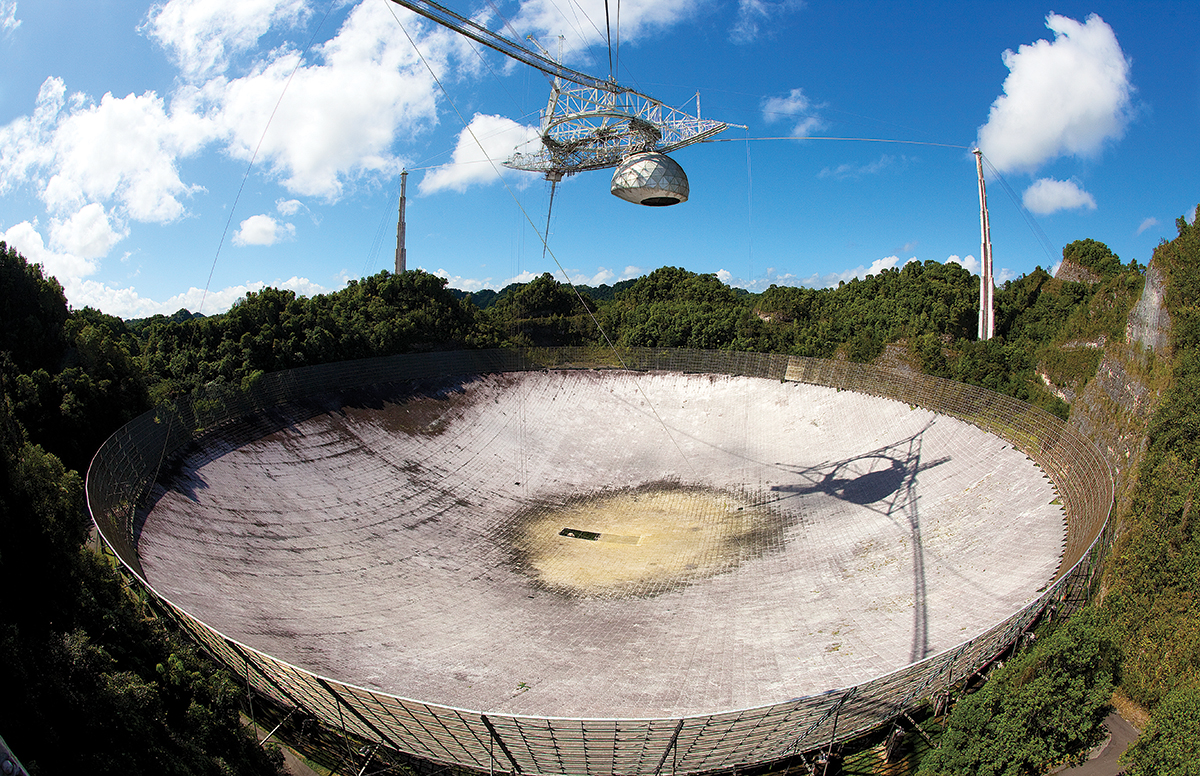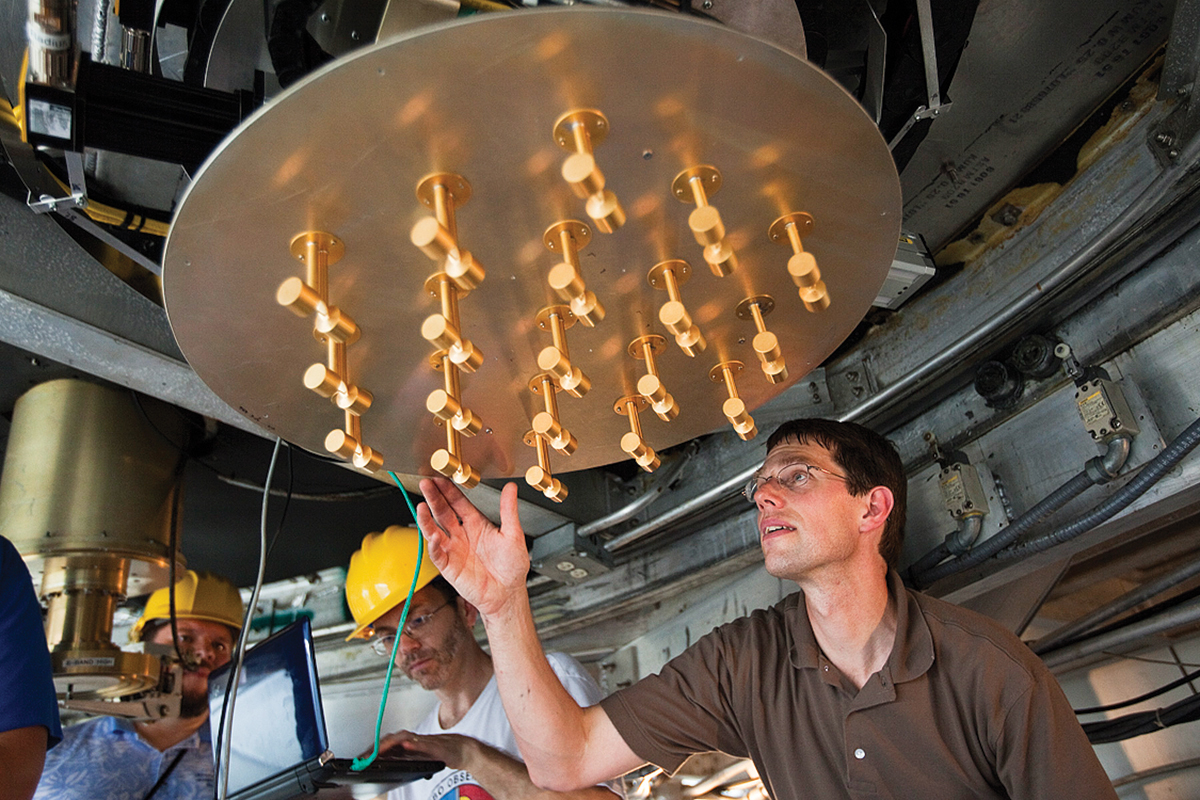
While the world’s largest radio telescope, located at the Arecibo Observatory in Puerto Rico, is 1,000 feet in diameter, it is limited in how quickly it can scan signals from deep space. So a team of BYU electrical and computer engineers—associate professor Karl F. Warnick (BS ’93), professor Brian D. Jeffs (BS ’78), and five students—built and installed a super-sensitive antenna prototype to try to widen our view of the radio sky.
“The higher power the telescope is, the smaller the point in the sky you can look at with a single pointing—it’s like a pinhole,” explains Jeffs. “We’re giving them the ability to look at a larger portion of the sky.”
Most single dish radio telescopes can capture only one “image pixel” at a time—the Arecibo telescope recently boosted that to seven. But the BYU team’s device—which is actually a gold-plated array of many small antennas—aims to raise the field of view to an unprecedented 40 pixels without losing any sensitivity.
Watch an interview at more.byu.edu/dish.










